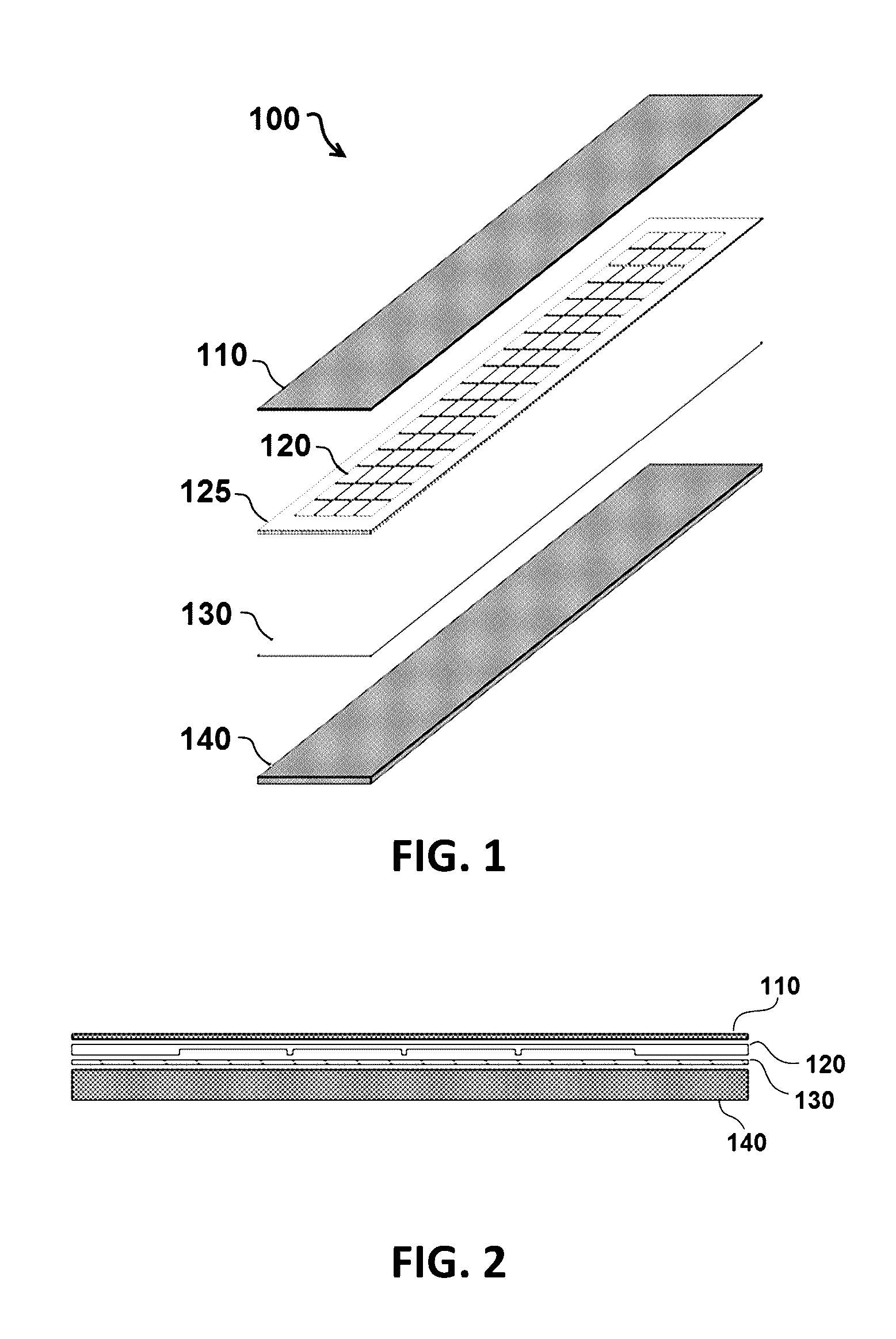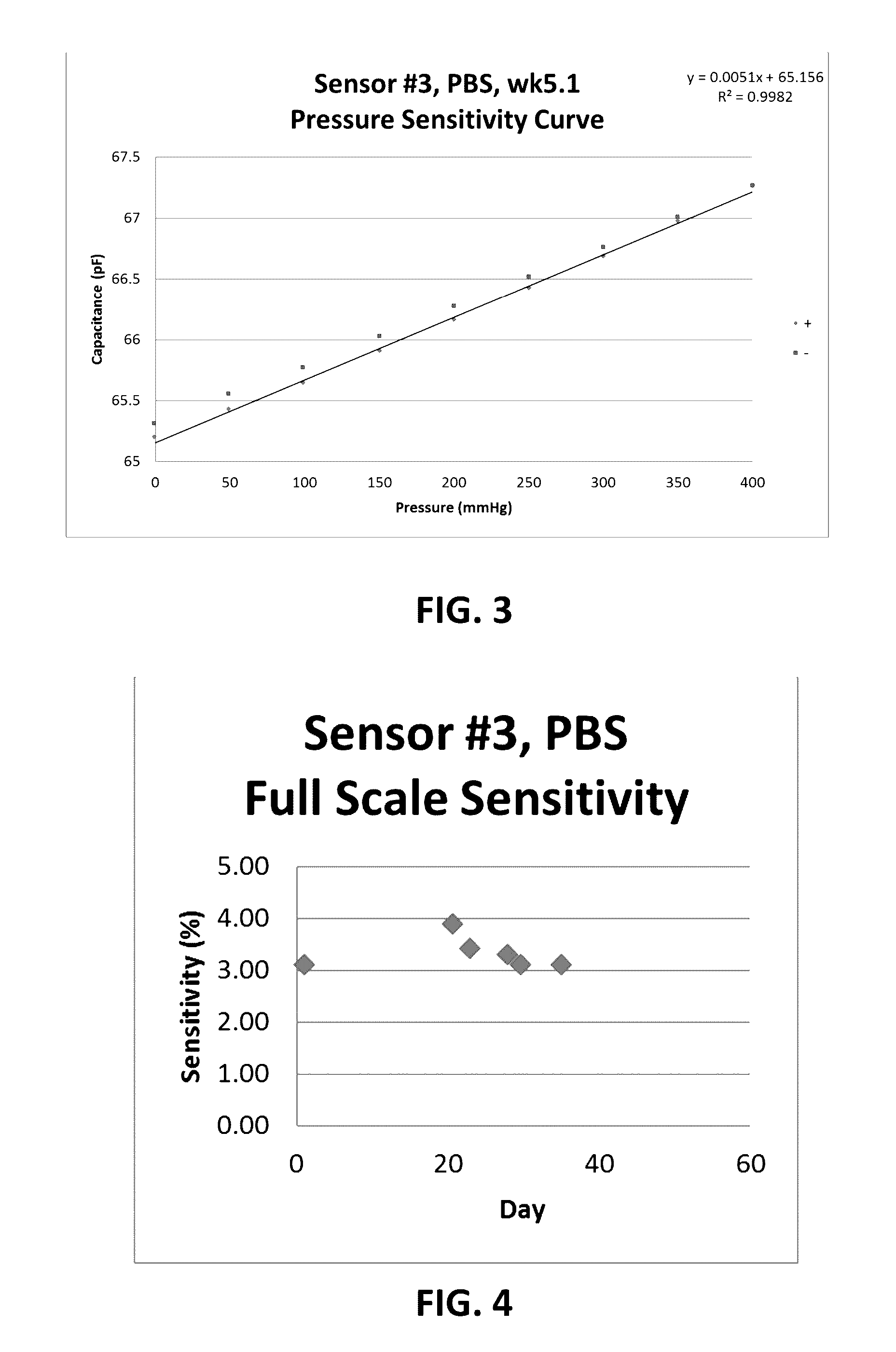Devices and methods for parameter measurement
a technology of parameter measurement and device, applied in the field of device and method for parameter measurement, can solve the problems of diaphragm based sensors, rigidity and biocompatibility of silicon based sensors, limiting factors in thickness, etc., and achieve the effect of restoring vision
- Summary
- Abstract
- Description
- Claims
- Application Information
AI Technical Summary
Benefits of technology
Problems solved by technology
Method used
Image
Examples
Embodiment Construction
[0103]Referring initially to FIGS. 1-2, an exemplary embodiment of a device 100 configured as a thin film sensor comprises a diaphragm 110, a chamber structure 120, an adhesive 130 and a substrate 140. In the embodiment shown, diaphragm 110 is configured as a thin film diaphragm transducer between 10 μm and 20 μm thick and is bonded to substrate 140 via adhesive 130. In particular embodiments, diaphragm 110 is approximately 15 μm thick and substrate 140 is approximately 50 μm thick. In the present disclosure, the thickness of a material is measured across the primary plane of the material (i.e. the minimum dimension for a given layer of material, as would be measured in a vertical direction in the configuration shown in FIG. 2).
[0104]In the illustrated embodiment, chamber structure 120 comprises a bonding pad 125 around its perimeter and chamber structure 120 is positioned between diaphragm 110 and substrate 140. In exemplary embodiments of device 100, substrate 140 can be electrica...
PUM
| Property | Measurement | Unit |
|---|---|---|
| thick | aaaaa | aaaaa |
| thick | aaaaa | aaaaa |
| thick | aaaaa | aaaaa |
Abstract
Description
Claims
Application Information
 Login to View More
Login to View More - R&D
- Intellectual Property
- Life Sciences
- Materials
- Tech Scout
- Unparalleled Data Quality
- Higher Quality Content
- 60% Fewer Hallucinations
Browse by: Latest US Patents, China's latest patents, Technical Efficacy Thesaurus, Application Domain, Technology Topic, Popular Technical Reports.
© 2025 PatSnap. All rights reserved.Legal|Privacy policy|Modern Slavery Act Transparency Statement|Sitemap|About US| Contact US: help@patsnap.com



